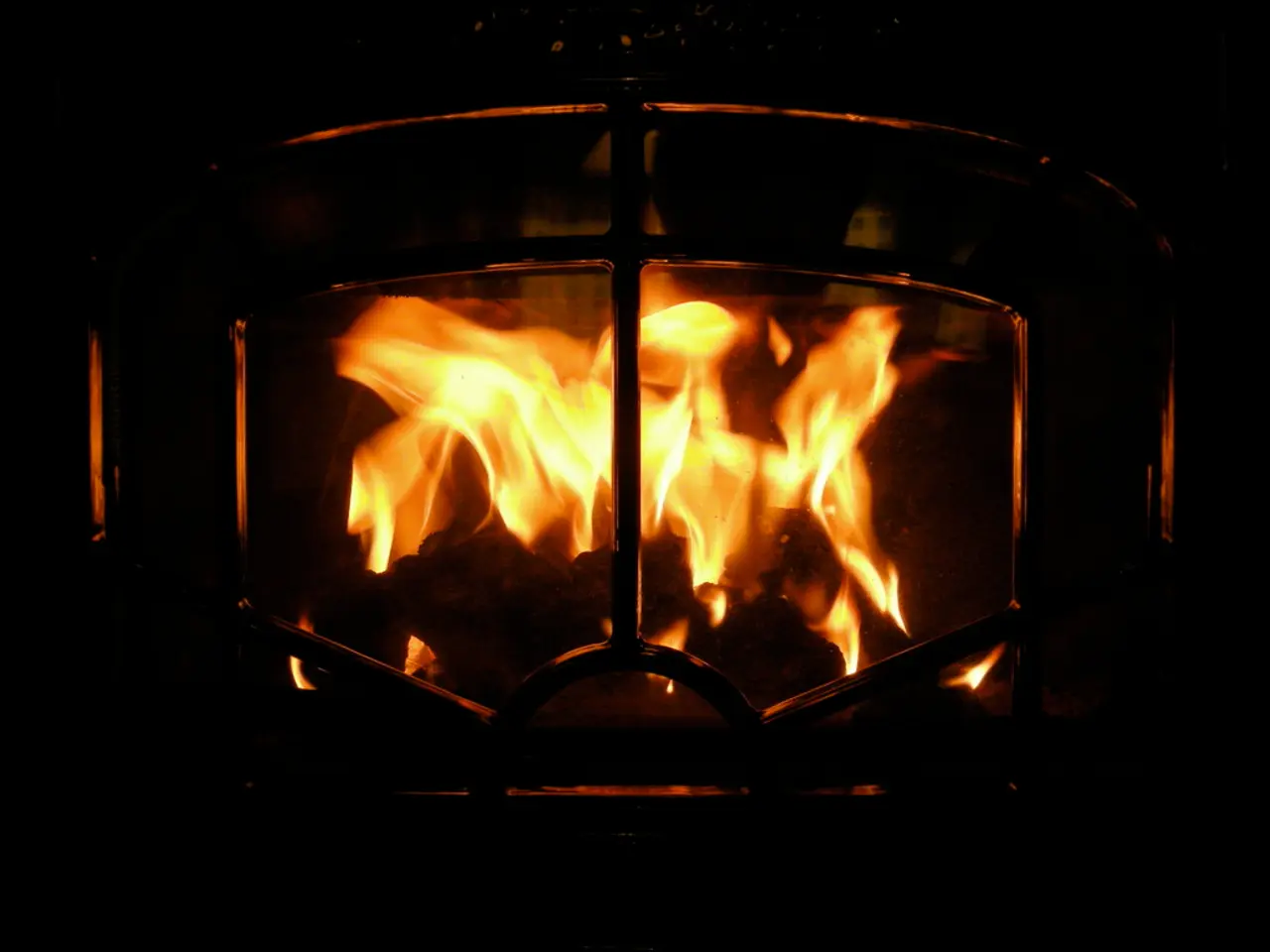House Infernos: Deadly Hazards Surpassing the Flames
In the United States, house fires are a common occurrence, with more than 1 million incidents reported each year [1][5]. These fires can be caused by various factors, with cooking-related incidents accounting for around 48.7% of residential fires [1]. Other significant causes include unintentional or careless actions, heating equipment, and electrical malfunctions [1].
The dangers associated with house fires extend beyond the flames themselves. Smoke inhalation, resulting from the incomplete combustion of materials, poses a serious health hazard. This smoke often contains toxic products such as carbon monoxide (CO), fine particulate matter, nitrogen dioxide, sulfur dioxide, and various organic pollutants [2].
Exposure to these toxic products can lead to several respiratory risks. Carbon monoxide poisoning, which reduces oxygen delivery in the bloodstream, can be fatal [4]. Inhalation of particulate matter and chemical irritants can cause irritation and inflammation of the airways, potentially leading to acute respiratory distress [2]. Long-term respiratory diseases such as chronic obstructive pulmonary disease (COPD) and increased susceptibility to acute lower respiratory infections (ALRI) are also potential outcomes [2].
Smoke in a house fire can overwhelm people quickly, preventing them from reaching an exit [6]. Inhaling burnt plastic and the toxic combustion of materials in the home can impair respiration and cause suffocation. It is crucial to note that deaths in house fires are often caused by smoke inhalation, not severe burns [7].
To mitigate these risks, it is essential to take preventative measures. Keeping a fire extinguisher handy is important for preventing and dealing with house fires [8]. When using space heaters, it is recommended to use a new device equipped with safety features, such as a tip-over feature [9]. During cold weather months, space heaters are one of the most common causes of house fires [9]. It is never safe to enter a burning home, even if you think you are away from flames, due to the risk of smoke inhalation [7].
Regularly testing smoke alarms and carbon monoxide detectors is also crucial for preventing house fires and minimizing the risks associated with smoke inhalation [10]. Heating sources like ovens, stovetops, dryers, and space heaters should be kept clean and electrical wiring should not pose a hazard [11].
In conclusion, while house fires can be devastating, understanding the risks associated with smoke inhalation is key to preventing these incidents and minimizing their impact. By taking preventative measures and being aware of the potential dangers, we can work towards a safer home environment.
References:
[1] National Fire Protection Association. (2020). Home Fires. Retrieved from https://www.nfpa.org/-/media/Files/News-and-Research/Fire-statistics-and-reports/US-Fire-Problem/2019-US-Fire-Problem-Overview/2019-US-Fire-Problem-Overview-Infographic.ashx
[2] American Lung Association. (2021). Indoor Air Quality. Retrieved from https://www.lung.org/our-initiatives/healthy-air/indoor-air-quality/indoor-pollutants/smoke.html
[3] Mayo Clinic. (2020). Carbon Monoxide Poisoning. Retrieved from https://www.mayoclinic.org/diseases-conditions/carbon-monoxide-poisoning/symptoms-causes/syc-20354513
[4] Centers for Disease Control and Prevention. (2020). Carbon Monoxide Poisoning. Retrieved from https://www.cdc.gov/co/faqs.htm
[5] National Fire Protection Association. (2020). Home Structure Fires. Retrieved from https://www.nfpa.org/-/media/Files/News-and-Research/Fire-statistics-and-reports/US-Fire-Problem/2019-US-Fire-Problem-Overview/2019-US-Fire-Problem-Overview-Infographic.ashx
[6] National Fire Protection Association. (2020). Smoke Alarms. Retrieved from https://www.nfpa.org/-/media/Files/News-and-Research/Fire-statistics-and-reports/US-Fire-Problem/2019-US-Fire-Problem-Overview/2019-US-Fire-Problem-Overview-Infographic.ashx
[7] National Fire Protection Association. (2020). Home Fire Safety. Retrieved from https://www.nfpa.org/-/media/Files/News-and-Research/Fire-statistics-and-reports/US-Fire-Problem/2019-US-Fire-Problem-Overview/2019-US-Fire-Problem-Overview-Infographic.ashx
[8] National Fire Protection Association. (2020). Fire Extinguishers. Retrieved from https://www.nfpa.org/-/media/Files/News-and-Research/Fire-statistics-and-reports/US-Fire-Problem/2019-US-Fire-Problem-Overview/2019-US-Fire-Problem-Overview-Infographic.ashx
[9] National Fire Protection Association. (2020). Space Heaters. Retrieved from https://www.nfpa.org/-/media/Files/News-and-Research/Fire-statistics-and-reports/US-Fire-Problem/2019-US-Fire-Problem-Overview/2019-US-Fire-Problem-Overview-Infographic.ashx
[10] National Fire Protection Association. (2020). Smoke Alarms. Retrieved from https://www.nfpa.org/-/media/Files/News-and-Research/Fire-statistics-and-reports/US-Fire-Problem/2019-US-Fire-Problem-Overview/2019-US-Fire-Problem-Overview-Infographic.ashx
[11] National Fire Protection Association. (2020). Electrical Wiring. Retrieved from https://www.nfpa.org/-/media/Files/News-and-Research/Fire-statistics-and-reports/US-Fire-Problem/2019-US-Fire-Problem-Overview/2019-US-Fire-Problem-Overview-Infographic.ashx








